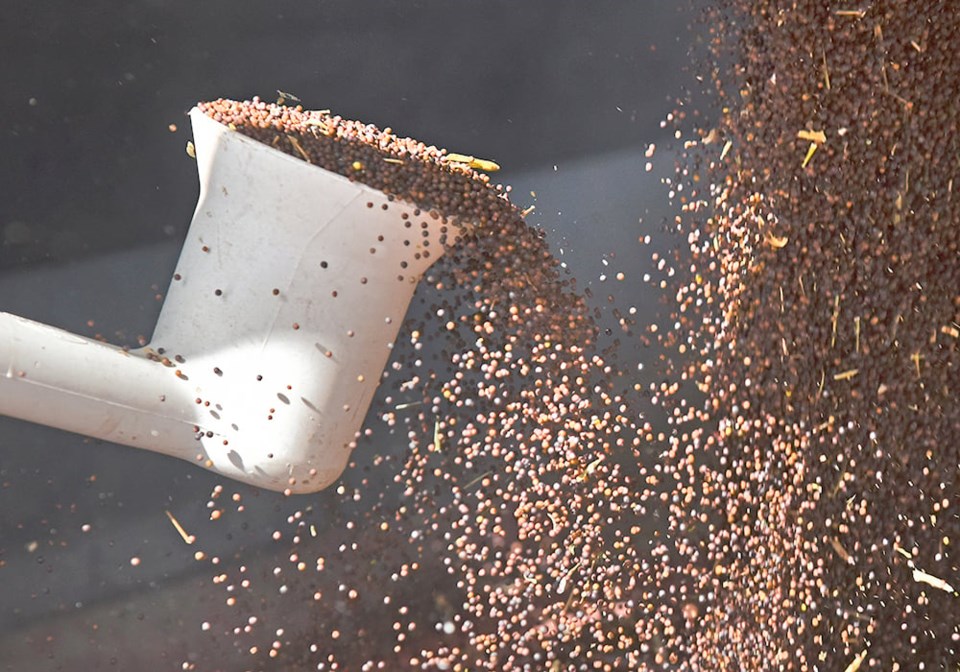WESTERN PRODUCER — Soybean and canola growers should circle June 14 on their calendars.
“It’s a date that really determines a lot of things for the next several years,” said Scott Gerlt, chief economist for the American Soybean Association.
That is when the U.S. Environmental Protection Agency is scheduled to make its final rule establishing Renewable Fuel Standard volumes for 2023, 2024 and 2025.
Soybean oil prices plummeted after the EPA announced its preliminary proposed rule on Dec. 1, 2022.
Prices were around 51 cents U.S. per pound at the end of April, down from 70 cents at the end of November.
Gerlt said the freefall is largely because of the EPA’s proposed biomass-based diesel mandates that were set at 2.82 billion gallons for 2023, 2.89 billion gallons for 2024 and 2.95 billion gallons for 2025.
“We were very disappointed on the soy side,” he said.
“It significantly underestimated what the industry wants to do.”
The EPA’s target for 2025 is 190 million gallons above the mandated level for 2022.
The soybean industry was counting on a 900-million-gallon increase in soybean-based biodiesel and renewable diesel alone.
Other U.S. government departments appear to share that optimistic outlook.
The U.S. Energy Information Administration is forecasting 5.9 billion gallons of annual renewable diesel production capacity by the end of 2025, up from 2.6 billion gallons in 2022.
To put that in perspective, total biodiesel capacity in the U.S. amounts to 2.3 billion gallons.
There have been more than 20 soybean crush expansion or new build announcements in the U.S. in response to that looming renewable diesel demand. Those projects will increase U.S. crush capacity by one-third.
Gerlt said the future of many of those projects will be in serious jeopardy if the EPA sticks with its previously proposed mandates, which would drive soybean oil and oilseed prices even lower.
On the other hand, there could be a big rebound in those markets if the mandates are increased.
“There is definitely the potential for a lot more movement when that final rule comes out,” he said.
Ken Ball, canola analyst with PI Financial, said canola prices have been slumping in tandem with falling soybean oil values, although not to the same magnitude.
Canola prices are not only tied to soybean oil values, they are also directly influenced by what happens in the U.S. renewable diesel sector because the EPA recently approved canola oil as a feedstock for the industry.
Ball worries about what could happen to Canada’s canola sector if the EPA sticks with its proposed biomass-based diesel mandates.
Canada’s crush capacity is forecast to grow by 5.7 million tonnes, or 50 percent, largely in response to that looming U.S. renewable diesel demand.
Crushers will be fixated on the EPA’s June 14 announcement.
“They’ll make projections based on the numbers they have from the EPA and other things,” said Ball.
If the EPA doesn’t budge on its current proposed mandates, there may be some crushers who say, “this is starting to look a little dangerous, we better hold back on this for a bit,” he said.
Today’s canola crush margins are encouraging crush expansion.
“Even though they’ve come down a lot, they’re still staggering,” said Ball.
“Right now, crushing canola is a licence to print money.”
He believes the proposed Canadian canola crush projects might be slightly more resilient than U.S. soybean crush projects.
That is because big crushers are better able to manipulate canola markets to their advantage than soybean markets because it is a more thinly traded commodity.




